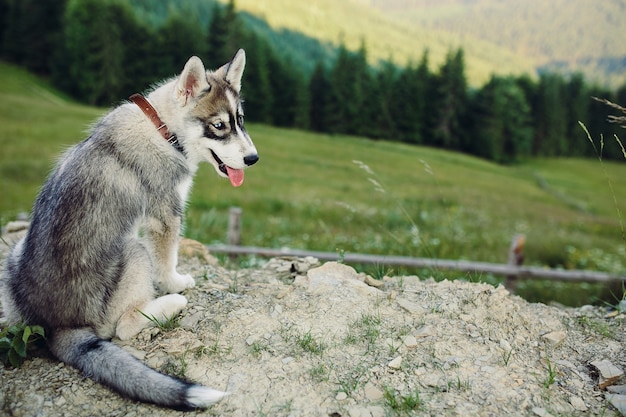So, you're curious about wolf meat, eh? It's not your everyday supermarket find, that's for sure. But let me tell you, it's a hidden gem waiting to be discovered. Don't let the "wild" aspect scare you off – wolf meat can be surprisingly delicious when prepared right. I've had my fair share of adventures with this unique ingredient, and trust me, there's a whole world of flavour waiting to be explored. Grab a cuppa, settle in, and let me share my insights on the world of wolf meat cooking.
(Part 1) The Ethical Landscape

Before we jump into the recipes and techniques, it's important to acknowledge the ethical considerations surrounding wolf meat consumption. It's a topic that often sparks lively debate, and I understand why. Wolves are fascinating creatures, vital to maintaining the delicate balance of ecosystems. They are apex predators, playing a crucial role in regulating prey populations. But they can also pose challenges, particularly for livestock owners and, in some cases, even humans.
The key here is responsible and sustainable hunting practices. If you're going to eat wolf meat, it's vital to ensure it's ethically sourced and doesn't disrupt natural ecosystems. Let me be clear: hunting for sport is a big no-no in my book. I'm talking about controlled hunts overseen by conservation authorities, with strict quotas to prevent over-hunting and safeguard wolf populations. It's about finding that delicate balance between human needs and environmental protection. Ultimately, the choice is yours. Do your research, be informed, and choose what resonates with your own values.
(Part 2) Sourcing Your Wolf Meat: A Journey of Discovery

Alright, so you're ready to explore the world of wolf meat. Now comes the fun part: finding it! It's not exactly a staple at your local butcher shop, is it? If you live in an area where wolf hunting is permitted, you might find local hunters willing to sell their harvest. But for many, sourcing wolf meat is a bit more of a quest.
I've had my fair share of adventures finding wolf meat. Online hunting forums can be a goldmine. You'll find communities dedicated to game meat and hunting, where people share tips and connect with suppliers. Of course, it's essential to do your research and stick to reputable sources. You want to be confident in the quality and ethical origins of your wolf meat.
When you finally get your hands on it, take a good look at the meat. It should be a deep, rich red colour, with a firm texture and a subtle gamey aroma. If you're ever unsure about its freshness, it's always best to err on the side of caution and not consume it.
(Part 3) Preparing Wolf Meat: Taming the Wild

You've got your wolf meat – congratulations! Now it's time to get ready for cooking. Wolf meat can be a bit tougher than your typical beef or chicken, so a bit of tenderizing is key. There are a few tried and true methods to unlock its full potential:
3.1 Marinating: Infusing Flavor and Tenderness
Marination is a classic for a reason. It's a simple way to add flavour and tenderize wolf meat. I love to use a blend of olive oil, lemon juice, garlic, and aromatic herbs like rosemary and thyme. The acidity of the lemon juice works wonders at breaking down tough protein fibres, while the oil and herbs add moisture and infuse it with flavour. Let the meat marinate for at least four hours, or even better, overnight for maximum results.
3.2 Brining: The Secret to Juicy, Flavorful Meat
Another favourite method is brining. It's all about soaking the meat in a salt solution, which helps to retain moisture and add a subtle salty flavour. To brine wolf meat, dissolve a cup of salt in a gallon of water and submerge your meat for 2-4 hours. You'll be amazed at how much juicier and tender it becomes.
3.3 slow cooking: Time for Tenderness
If you're looking for a hands-off approach, slow cooking is your friend. Just place the meat in your slow cooker with some liquid, like broth or wine, and let it cook on low heat for several hours. It's like magic – the long, slow cooking process breaks down the tough fibres, leaving you with tender, juicy meat. You can even add vegetables or herbs to your slow cooker for a delicious and flavorful meal.
(Part 4) wolf meat recipes: From Wild to Wonderful
Now, let's get our hands dirty! Wolf meat is surprisingly versatile, and there's a recipe for every palate. Here are a few of my personal favourites:
4.1 wolf meat stew: A Hearty Winter Warmer
A hearty stew is always a winner, and wolf meat takes it to another level. It's perfect for a chilly evening with friends and family. Here's what you'll need:
- 1 pound of wolf meat, cubed
- 1 onion, chopped
- 2 carrots, chopped
- 2 celery stalks, chopped
- 4 cloves of garlic, minced
- 1 tablespoon olive oil
- 1 cup beef broth
- 1/2 cup red wine
- 1 teaspoon dried thyme
- 1/2 teaspoon salt
- 1/4 teaspoon black pepper
- 1 bay leaf
Instructions:
- Heat the olive oil in a large pot or dutch oven over medium heat. Add the cubed wolf meat and cook until nicely browned on all sides.
- Add the onion, carrots, celery, and garlic to the pot and cook until softened, about 5 minutes.
- Pour in the beef broth, red wine, thyme, salt, pepper, and bay leaf. Bring to a boil, then reduce heat and simmer for 1-2 hours, or until the meat is meltingly tender.
- Serve hot with crusty bread or creamy mashed potatoes for a truly satisfying meal.
4.2 wolf meat burgers: A Wild Take on a Classic
Who doesn't love a good burger? Wolf meat burgers are a delightful surprise. They have a slightly gamey flavour that adds a unique twist to the classic. You can use ground wolf meat or chop up cooked wolf meat for this recipe.
- 1 pound of wolf meat, ground or chopped
- 1/2 cup breadcrumbs
- 1/4 cup grated onion
- 1 egg, beaten
- 1 tablespoon Worcestershire sauce
- 1/2 teaspoon salt
- 1/4 teaspoon black pepper
- burger buns
- Your favorite burger toppings
Instructions:
- In a large bowl, combine the wolf meat, breadcrumbs, onion, egg, Worcestershire sauce, salt, and pepper. Mix well until everything is evenly distributed.
- Shape the mixture into 4-6 patties, depending on your preferred size.
- Cook the patties over medium heat in a skillet or on a grill for 4-5 minutes per side, or until cooked through.
- Serve on your favorite burger buns, piled high with your favorite toppings – cheese, lettuce, tomato, onion – the possibilities are endless!
4.3 wolf meat curry: A Fusion of Flavors
Let's add some spice to the mix! A wolf meat curry is a delicious fusion of flavours. The rich curry complements the gamey taste of the wolf meat beautifully. Feel free to use any curry recipe you love, just swap out the traditional meat for wolf meat.
Here's a basic recipe to get you started:
- 1 pound of wolf meat, cubed
- 1 onion, chopped
- 2 cloves of garlic, minced
- 1 inch of ginger, grated
- 1 tablespoon curry powder
- 1 teaspoon ground cumin
- 1/2 teaspoon turmeric
- 1/4 teaspoon cayenne pepper (adjust to your spice preference)
- 1 (14 ounce) can of diced tomatoes
- 1 cup of coconut milk
- 1/2 cup water
- Salt and pepper to taste
- Rice or naan bread for serving
Instructions:
- Heat the oil in a large pot or Dutch oven over medium heat. Add the cubed wolf meat and cook until nicely browned on all sides. Remove the meat from the pot and set aside.
- Add the onion, garlic, and ginger to the pot and cook until softened, about 5 minutes.
- Stir in the curry powder, cumin, turmeric, and cayenne pepper and cook for 1 minute, or until fragrant.
- Add the diced tomatoes, coconut milk, and water. Bring to a boil, then reduce heat and simmer for 30 minutes, or until the sauce has thickened.
- Return the wolf meat to the pot and cook for another 10 minutes, or until heated through.
- Season with salt and pepper to taste and serve hot with rice or naan bread. Enjoy!
(Part 5) cooking tips: Mastering the Art of Wolf Meat
You've got your recipes, but let's talk about some general tips to make your wolf meat cooking adventures even more successful.
5.1 Don't Overcook It: The Key to Tenderness
Wolf meat can be tough, but overcooking is its worst enemy. Aim for medium-rare to medium, which means an internal temperature of 145°F (63°C). A meat thermometer is a great tool for checking the temperature. If you're unsure, it's always better to err on the side of slightly undercooked than overcooked. You can always cook it a bit longer if you prefer it more well-done.
5.2 Slow and Steady: Embrace low and slow cooking
As mentioned earlier, slow cooking is a fantastic way to tenderize wolf meat. Cook it on low heat for several hours, or even overnight, to break down those tough fibres. You'll be rewarded with tender, juicy meat that practically melts in your mouth.
5.3 Flavorful Friends: Enhance the Gamey Taste
Wolf meat has a slightly gamey flavour. To make the most of it, embrace flavorful ingredients that complement its unique taste. Think herbs, spices, wine, or broth. Experiment and discover what flavours you love best.
5.4 Embrace the Experiment: Unleash Your Creativity
There are no hard and fast rules in the kitchen. Get creative and experiment with different recipes and techniques. Wolf meat pairs well with earthy flavours like mushrooms, onions, and garlic, as well as fruity notes like cranberries and apples. You might just stumble upon your next favourite dish!
(Part 6) wolf meat nutrition: A Healthy Choice
Now, let's talk about the nutritional benefits. Wolf meat is a good source of protein, iron, and other essential vitamins and minerals. Here's a comparison of wolf meat to other common meats:
| Meat Type | Protein (g/100g) | Iron (mg/100g) | Fat (g/100g) |
|---|---|---|---|
| Wolf Meat | 25 | 2.5 | 5 |
| Beef | 21 | 2.7 | 10 |
| chicken breast | 31 | 1.3 | 2 |
| pork loin | 26 | 1.4 | 7 |
As you can see, wolf meat is a lean protein source, with a relatively low fat content compared to other meats. It's also a decent source of iron, which is crucial for healthy oxygen transport throughout the body.
(Part 7) Wolf Meat Safety: Handling with Care
Like any meat, proper handling is key to prevent foodborne illness. Here are some essential tips for safe wolf meat consumption:
- Wash your hands thoroughly with soap and water before and after handling wolf meat.
- Clean all surfaces, utensils, and cutting boards that have been in contact with wolf meat with hot soapy water.
- Cook wolf meat thoroughly to an internal temperature of 145°F (63°C) to kill any harmful bacteria.
- Don't leave cooked wolf meat at room temperature for more than two hours.
- Refrigerate leftover wolf meat promptly and consume within 3-4 days.
If you have any doubts about the safety of your wolf meat, it's best to err on the side of caution and not eat it. If you experience symptoms of food poisoning, like nausea, vomiting, diarrhoea, or stomach cramps, seek medical attention immediately.
(Part 8) FAQs: Answers to Your Wolf Meat Questions
Let's wrap things up with some commonly asked questions about wolf meat.
8.1 Is wolf meat safe to eat?
Yes, wolf meat is generally safe to eat when handled and cooked properly. However, it's essential to ensure the meat is sourced from a reputable supplier and is fresh and free from contamination.
8.2 What does wolf meat taste like?
Wolf meat has a subtle gamey flavour reminiscent of venison or wild boar. It's lean and tender, with a rich, deep flavour.
8.3 How do you tenderize wolf meat?
You can tenderize wolf meat using several methods, including marinating, brining, and slow cooking.
8.4 How do you cook wolf meat?
Wolf meat can be cooked in many ways, including stewing, roasting, grilling, and stir-frying. It's important to cook it to an internal temperature of 145°F (63°C) to ensure it's safe to eat.
8.5 Is wolf meat legal to eat in all countries?
The legality of wolf meat consumption varies from country to country. In some areas, it's legal to hunt and consume wolf meat, while in others, it's prohibited. It's crucial to research the laws in your location before consuming wolf meat.
So there you have it, folks! A comprehensive guide to cooking with wolf meat, from ethical considerations to delicious recipes and essential tips. Go forth and explore the wild world of wolf meat cooking. You might just discover a new culinary favourite!
Everyone is watching

Corn on the Cob: The Ultimate Guide to Perfectly Cooked Ears
Healthy MealsAh, corn on the cob. Just the name evokes images of sunny days, barbecues, and that sweet, juicy flavour that ...

Perfect Pork Roast Oven Cooking Time: A Guide to Delicious Results
Healthy MealsThere's something truly satisfying about a perfectly roasted pork. The aroma alone is enough to make your mout...

Ham Cooking Time: How Long to Bake, Smoke, or Boil a Delicious Ham
Healthy MealsAh, ham. It's a classic, isn't it? A real crowd-pleaser, especially around holidays. And when done right, it'...

Scallops: The Ultimate Guide to Perfect Cooking
Healthy MealsAh, scallops. Those delicate, sweet, and utterly delicious morsels of the sea. They hold a special place in my...

Spaghetti Squash: The Ultimate Guide to Cooking and Serving
Healthy MealsRemember that time you saw spaghetti squash at the supermarket, looking all bumpy and strange, and thought, "W...
